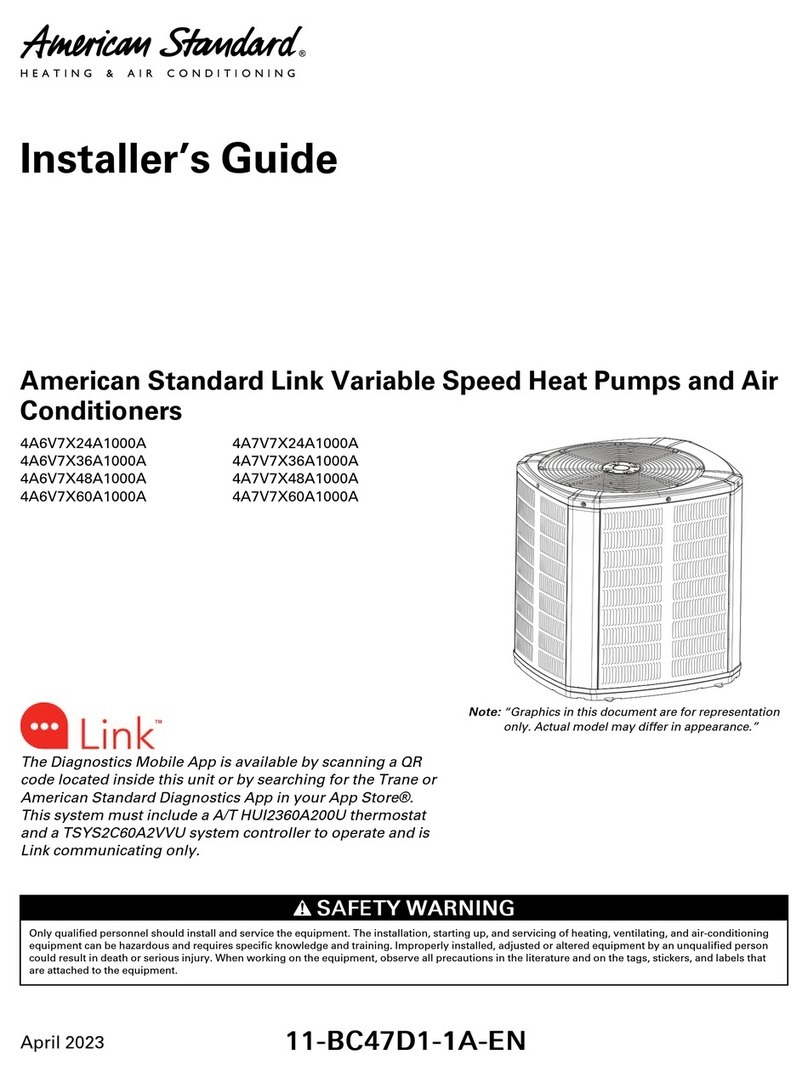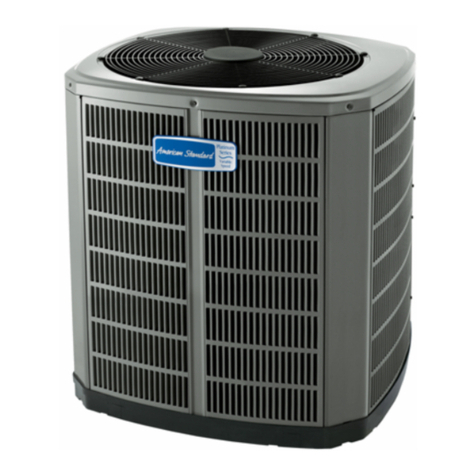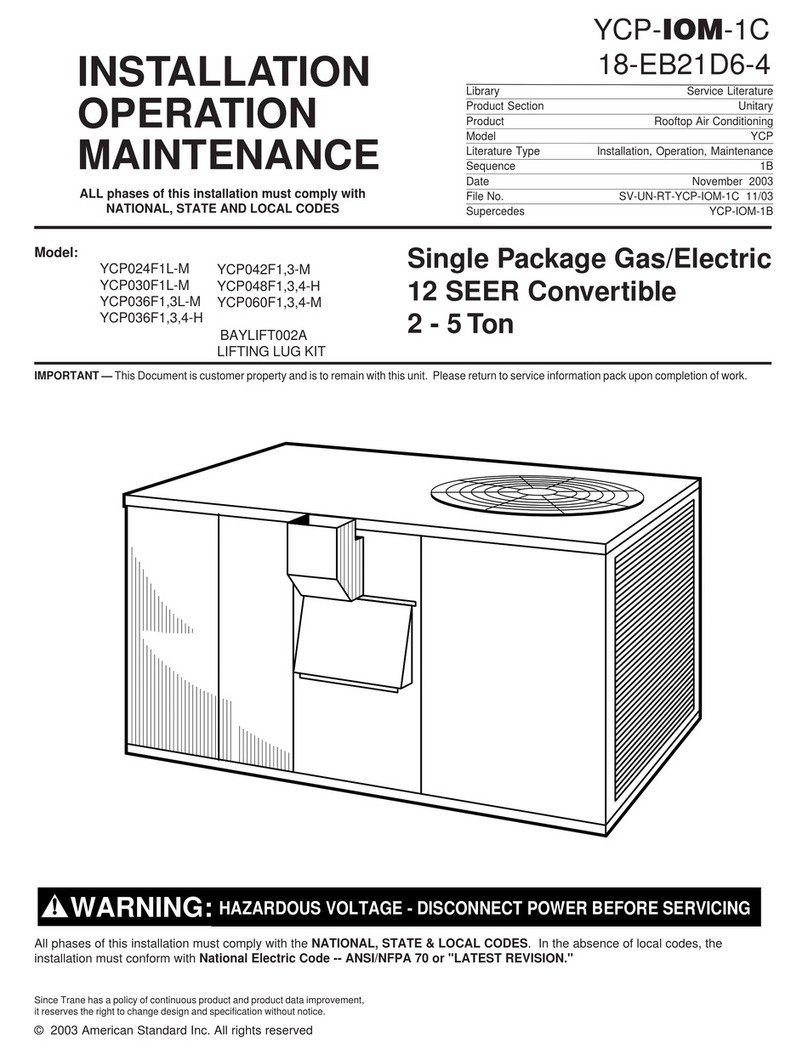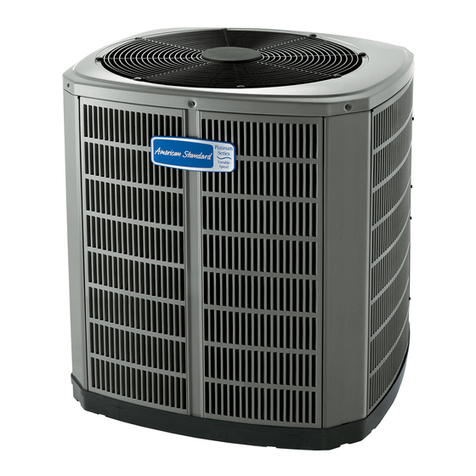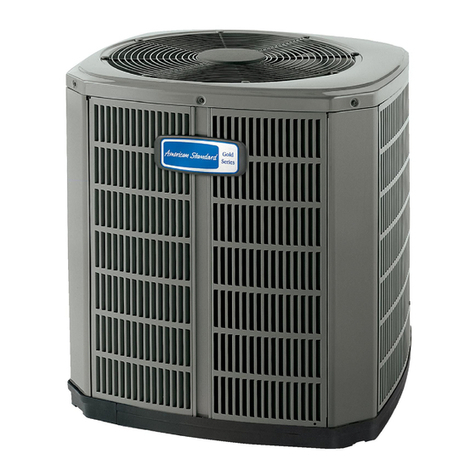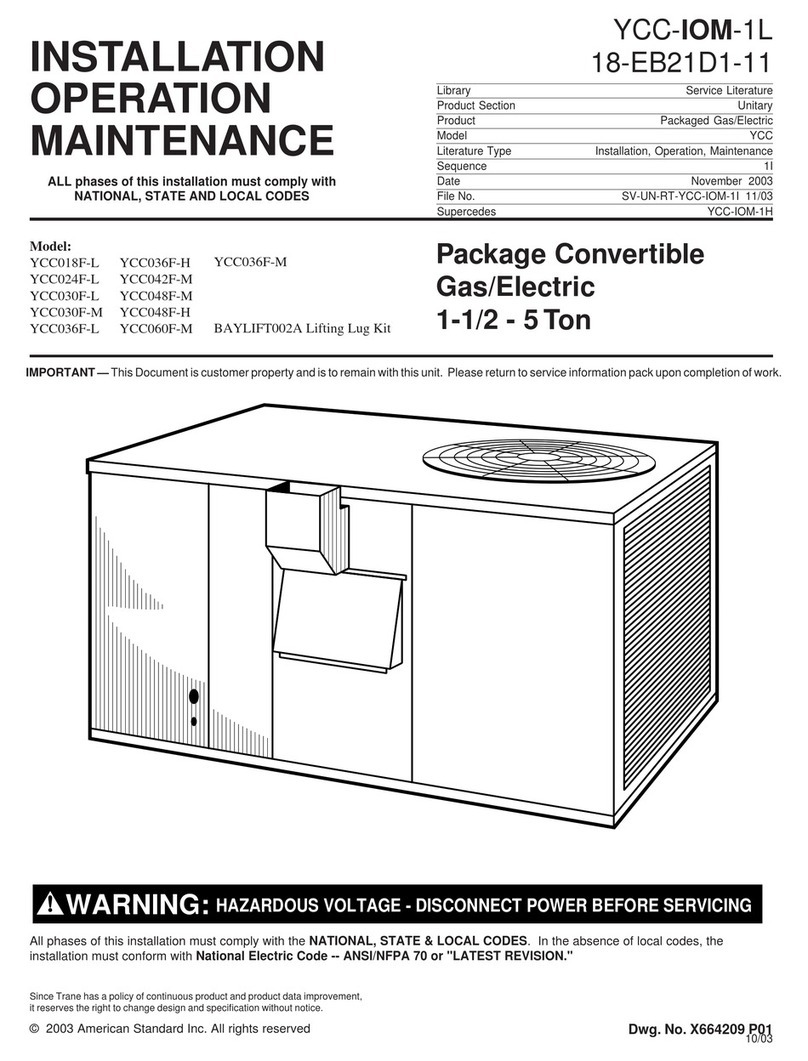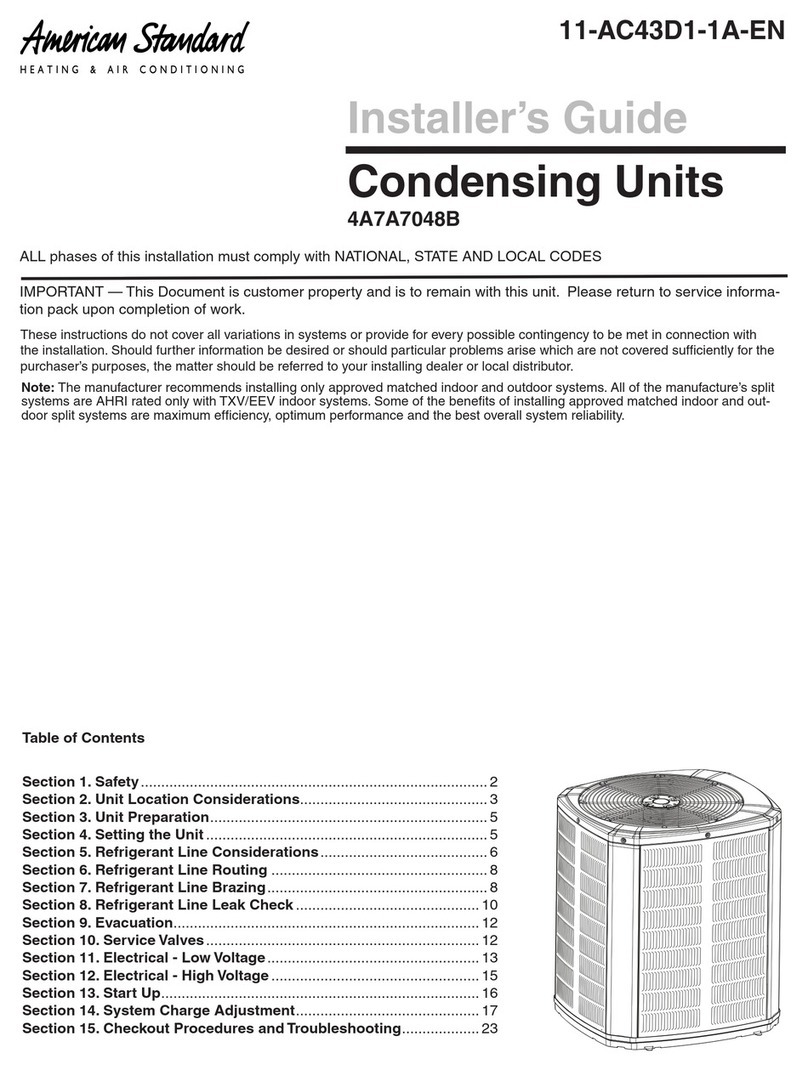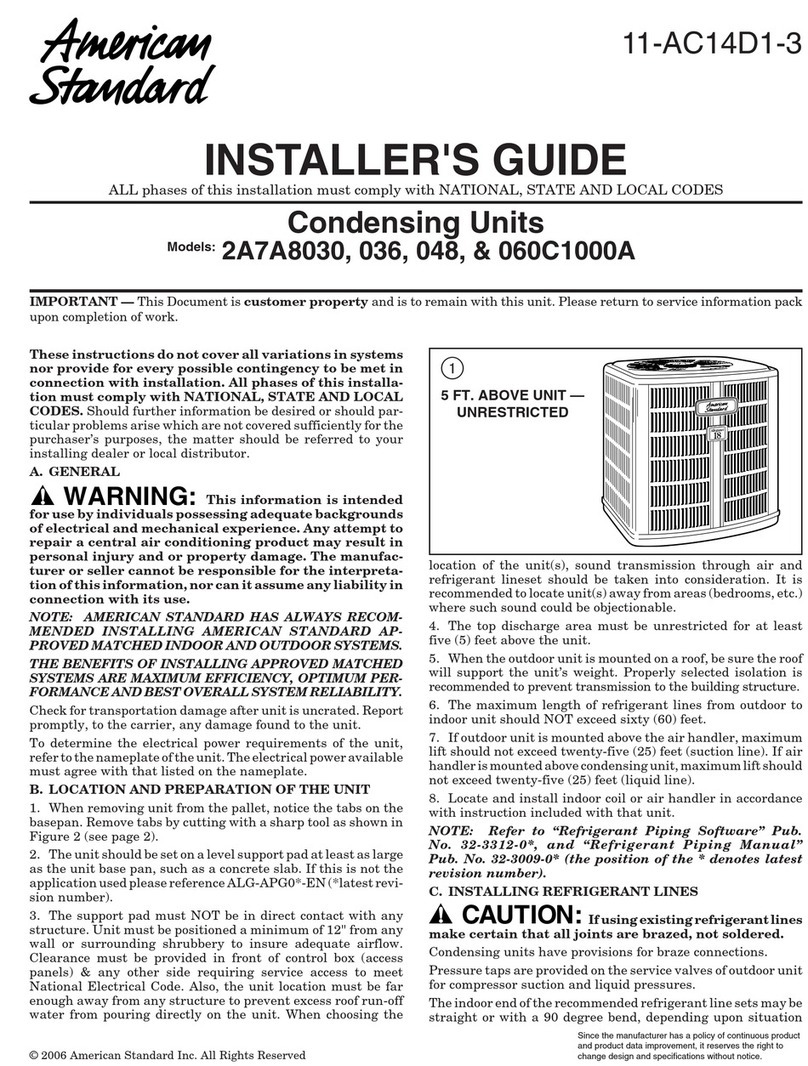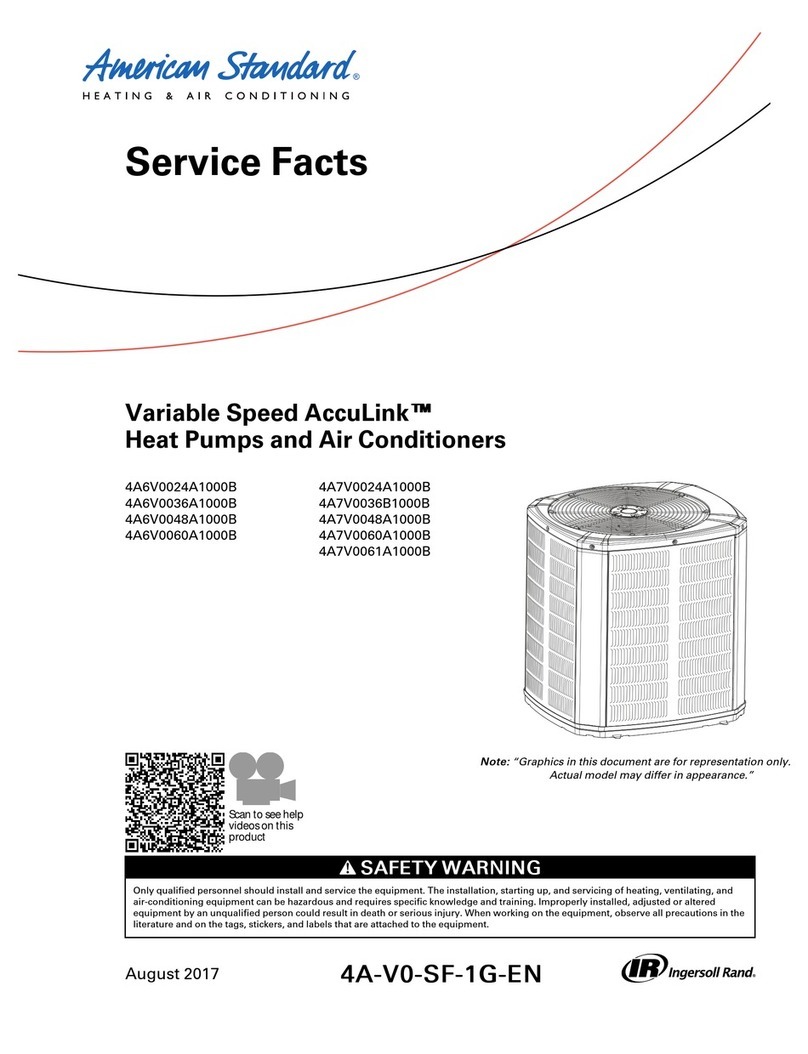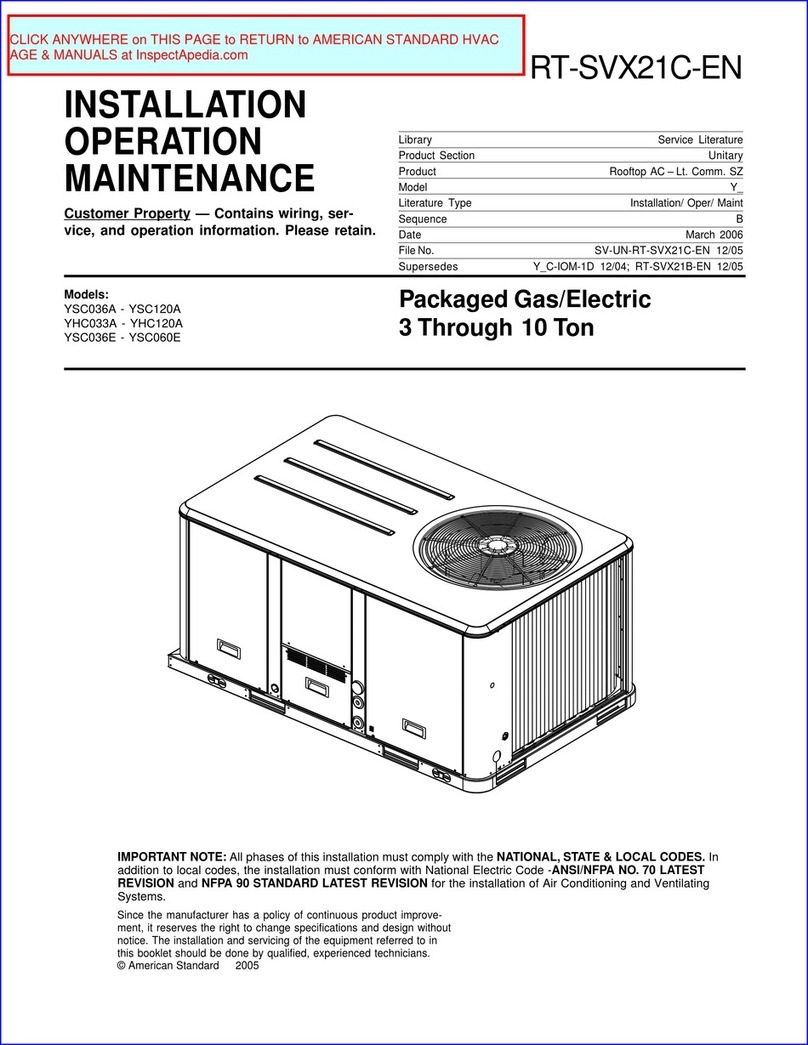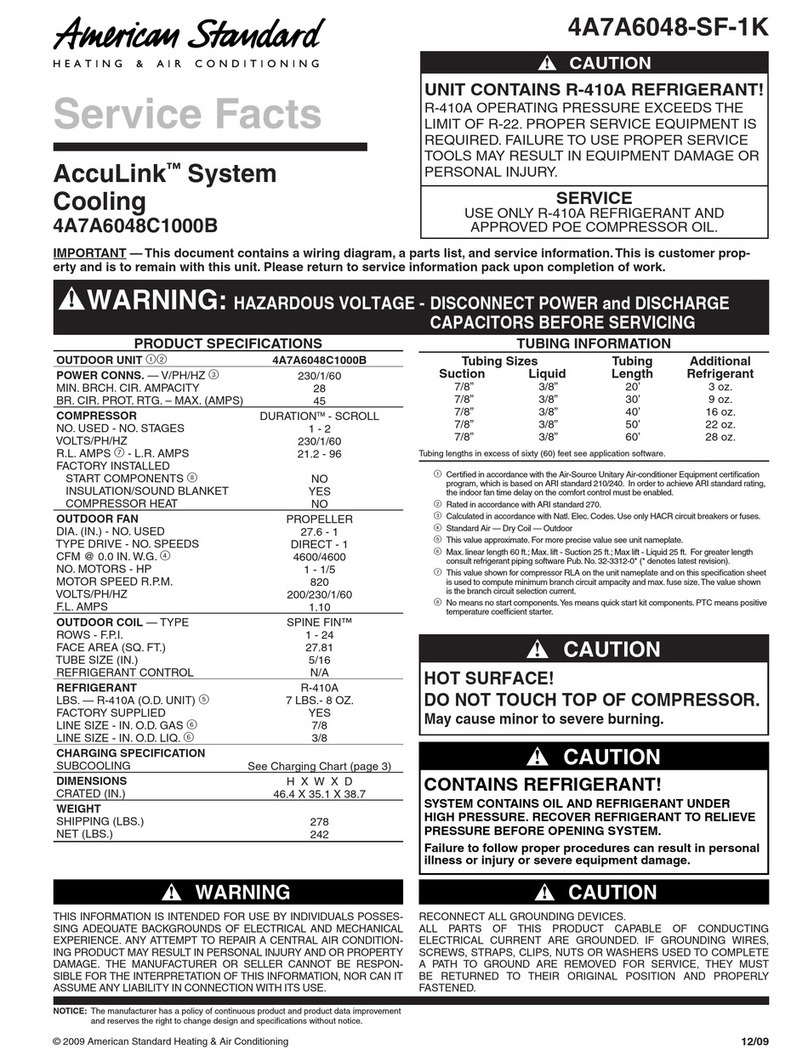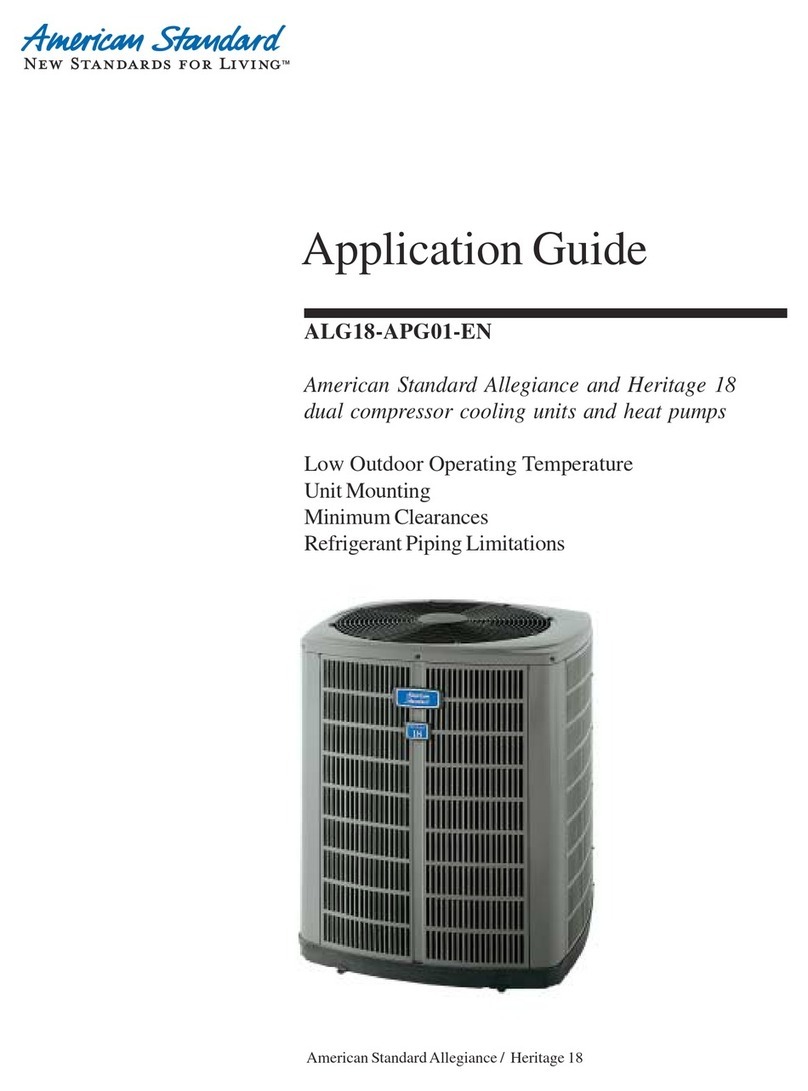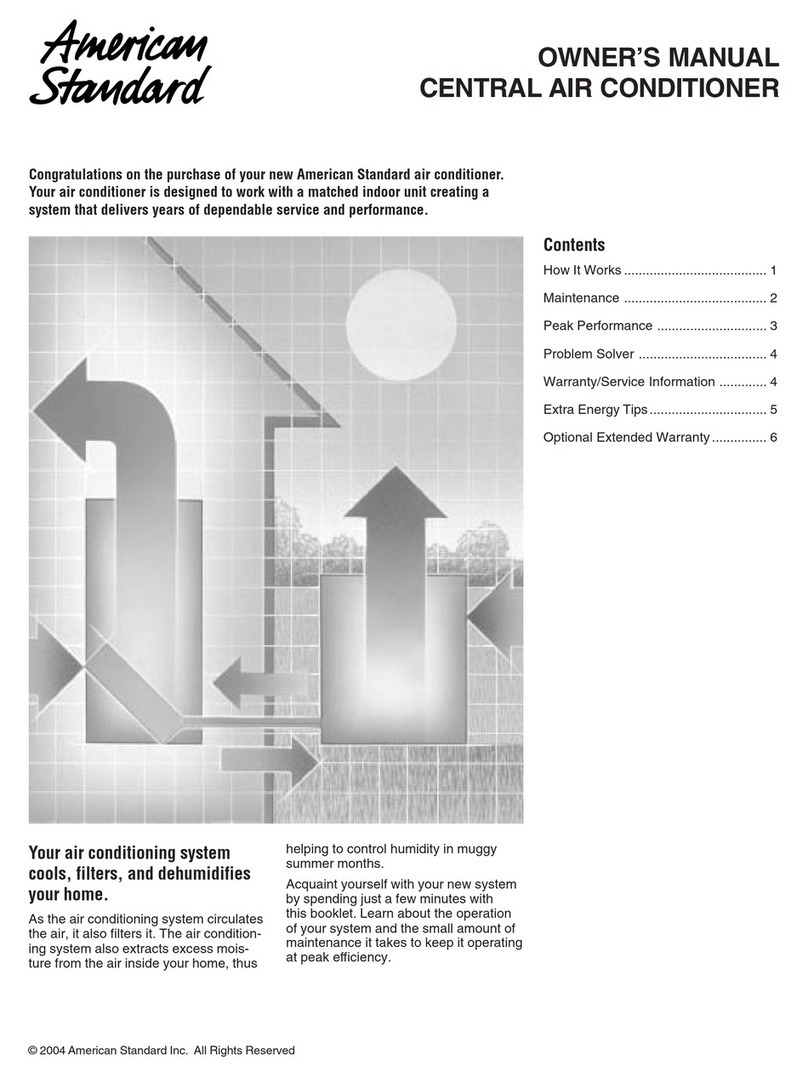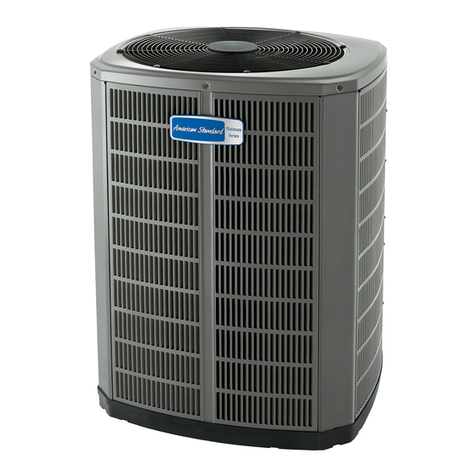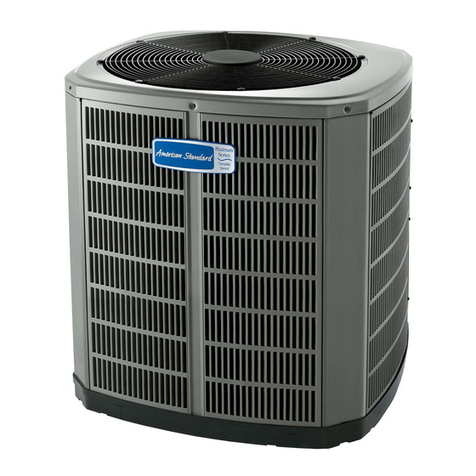
Page 7
LOCATIONS AND RECOMMENDATIONS
HORIZONTAL AIRFLOW APPLICATION
1. Theseunitsaredesigncertifiedforoutdoorinstallations. These
units may be installed directly on wood flooring or on Class A,
Class B, or Class C roof covering material. The discharge air
from the condenser fans must be unrestricted for a minimum of
3 feet above the unit.
NOTE: The unit is shipped for horizontal installation.
TheAirInlet Hood in the combustionblower access panelmust
have adequate clearance around the air opening into the
combustion area. See Outline Drawing, Figure 3.
Examine all flue product-carrying areas of the furnace, its vent
system, and the main burner for safe operation. A periodic
inspectionof the furnaceshould bemadeby a qualified service
agency at the start of each heating season.
ReplacementpartslistforthisGas/ElectricAirConditioner,maybe
obtained by contacting your local manufacturer representative.
NOTE: If any internal accessories are to be added to the unit,
install them at the shop if at all practical.
2. Location of the unit must allow service clearance around it.
Clearance of the unit must be given careful consideration. See
Figures 2, 3, and 4.
IMPORTANT: Air outlet duct must have 1" clearance to
combustible material downstream from the unit.
3. Check the handling facilities to ensure the safety of personnel
and the unit(s).
4. CAUTION MUST BE TAKEN AT ALL TIMES TO AVOID
PERSONAL INJURIES AND/OR DAMAGE TO EQUIPMENT
5. The unit must be mounted level for proper drainage of water
through the holes in the base pan.
6. The unit must not be exposed to direct roof water runoff.
7. Flexible duct connectors must be of a flame retardant material.
All duct work outside of the structure must be insulated and
weatherproofed in accordance with local codes.
8. Holesthroughexteriorwallsmustbe sealed in accordance with
local codes.
9. All fabricated outdoor ducts should be as short as possible.
CLEARANCES
1. The recommended clearances for single-unit installations are
illustrated in Figure 4. These minimum requirements are not
only an important consideration when determining unit place-
ment, but they are also essential to ensure adequate service-
ability, maximum capacity, and peak operating efficiency.
2. Any reduction of the unit clearances indicated in these illustra-
tionsmayresultin condenser coil starvation or the recirculation
of warm condenser air. Actual clearances which appear to be
inadequate should be reviewed with a local engineer.
3. See the unit’s nameplate for the absolute minimum clearance
between the unit and any combustible surface(s).
IMPORTANT:
1. Removethe FlueandAirInlet Hoodwithgasket fromthereturn
air section of the unit.
Thescrewsthatattachtheflueandairinlethoodwillbeinstalled
in their proper location at the factory. Therefore, they must be
removedand then used toattach theflue andthe airinlet hood.
2. Remove the packaging material from the components and
secure the Flue and Air Inlet Hood with the gasket to the unit
with sheet metal screws as illustrated in Figure 5. See “Firing
Rate Selection” section for additional information.
NOTE: Outdoor air or other requirements during heating
operation that result in supply air temperatures below 80
degrees F or return air temperatures below 50 degrees F may
cause flue gas condensate to form and is to be avoided.
DOWNFLOW APPLICATION -- CURB MOUNTING
1. The Roof Mounting Curb, (field assembled
BAYCURB030,038,033,034A), or a field fabricated curb must
be in place before the unit is hoisted to the roof top.
2. TheRoofMounting Curb(frame)mustbeinstalled onaflat,
level section of the roof (maximum of 1/4" per foot pitch)
and provide a level mounting surface for the unit. In
addition,besuretoprovidesufficientheightabovetheroof
to prevent water from entering the unit.
NOTE: This unit was shipped for horizontal installation. Con-
vert to downflow per instructions:
Remove covers from the downflow supply and return air open-
ings and place them over the horizontal supply return air
openings(paintedsideout)andsecurewithsheetmetalscrews.
See Figure 6.
3. Be sure the mounting curb spans structural members (trusses)
oftheroof, thereby providing sufficient supportfor the weightof
the unit, the curb, the duct(s), and any factory or field installed
accessories. See Figures 1, 7, 8, 9, 10, and 11.
4. Be sure the hole in the structure for the ducts is large enough
to accommodate the fabricated ducts and the insulation sur-
rounding them. See Figure 4.
Note: If any internal accessories are to be added to the unit,
install them at the shop if at all practical.
5. These units are design certified for outdoor installation. These
units may be installed directly on wood flooring or on Class A,
Class B, or Class C roof covering material. The discharge air
from the condenser fans must be unrestricted for a minimum of
3 feet above the unit.
The air inlet hood in the combustion blower access panel must
haveadequateclearancearoundairopeningsintothecombus-
tion area. See Outline Drawing, Figure 3. continued on next page


